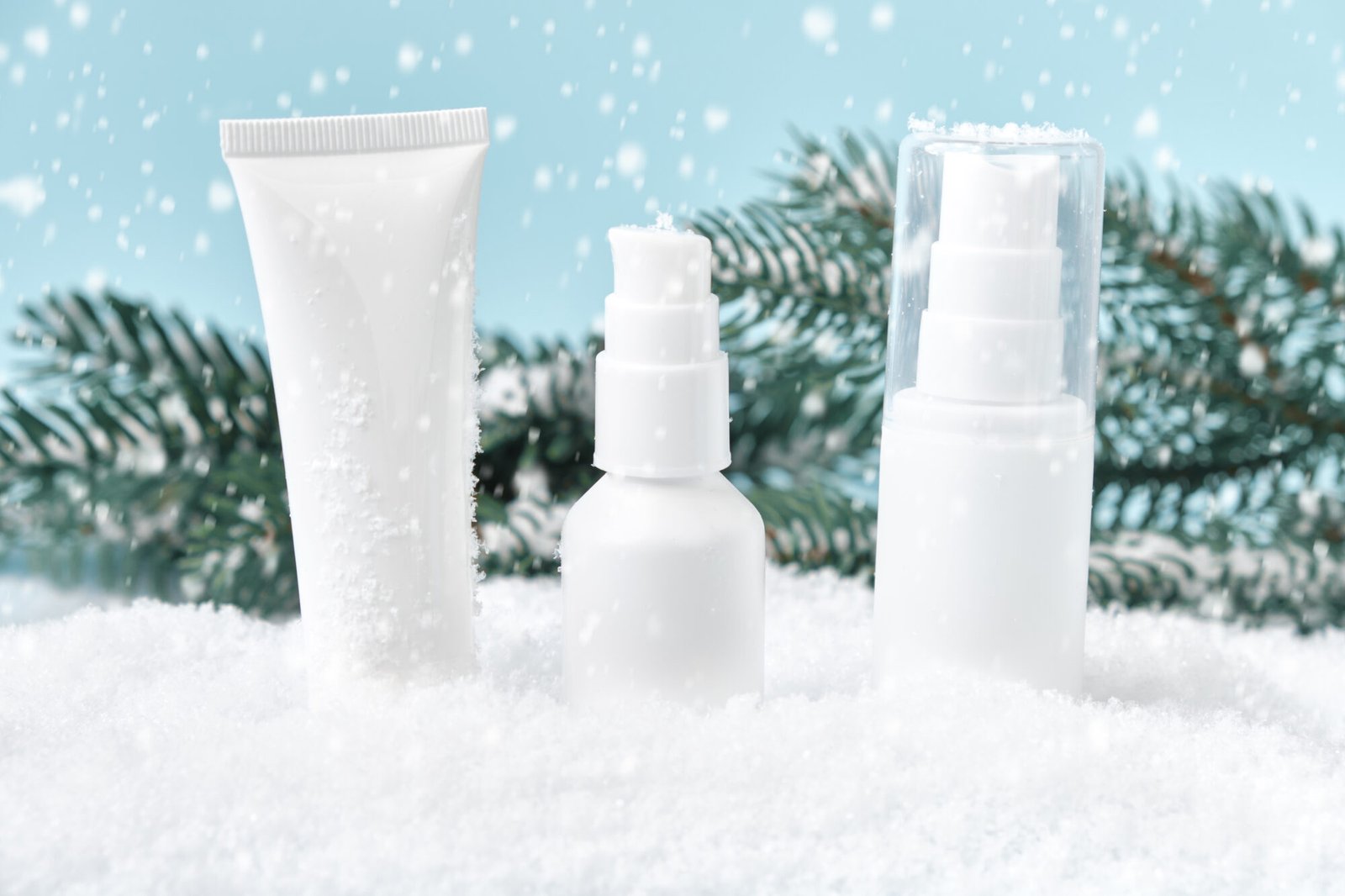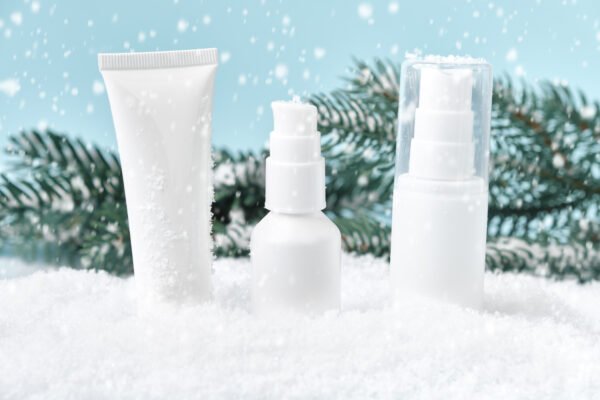Introduction
People who have combination skin have a hard time in the winter. It can be hard to keep oily and dry spots in check when it’s warm outside, but your skin needs extra care and attention when it gets cold. Follow the tips in this blog post for winter skincare for combination skin to keep your skin healthy and beautiful all season long.
Understanding Combination Skin in Winter
Combination skin has an oily forehead, nose, and chin but dry cheeks. Oily locations may create more oil in winter, whereas cold air and inside heating may dry air. This paradox makes skincare difficult and requires specialist treatments for both.
Winter winds may dry skin. To compensate, dry skin may grow oilier T-zones. To create a nourishing and balanced winter skincare regimen, you must understand these dynamics.
Knowing skincare products differ, particularly for winter combination skin, is crucial. Find lightweight, non-greasy moisturizers. Parched regions may get essential elements from balanced oil production.
The Basics of Winter Skincare
Understanding winter skin changes is the first step to winter skincare. Colder temperatures and less humidity dehydrate skin, reducing suppleness and smoothness. Adjusting your skincare routine for seasonal challenges is essential.
Instead of gel moisturizers, use thicker creams to counteract winter dryness. Heavy formulations provide a moisture barrier to keep skin wet longer. Use non-comedogenic products to avoid clogged pores, especially in oily areas.
Use gentle cleansers to preserve skin oils. The skin’s natural barrier is preserved by pH-balanced cleansers. Look for hyaluronic acid to moisturize dry skin.
Hydration is Key
Good winter skincare requires moisture. Water maintains the skin’s environmental barrier. Skin firms and minimizes fine wrinkles and dryness with moisture.
Under your moisturizer, add a serum for extra moisture. Hydrating glycerin and ceramide serums penetrate the skin. Lightweight products may be applied throughout the face without overwhelming the T-zone.
Keep hydrated internally. Water and omega-3-rich diets enhance internal skin. Salmon, walnuts, and flaxseeds contain these lipids.
The Role of Exfoliation
Exfoliation is essential to any skincare program to remove dead skin and encourage cell turnover. In winter, exfoliation must be done carefully to prevent aggravating dry or sensitive skin.
Choose mild exfoliants like lactic acid or fruit enzymes that won’t peel skin. These chemicals remove dead skin cells without irritating washing. Exfoliate once or twice a week to preserve balance.
To rehydrate, use a mask or serum after exfoliation. Soothing and hydrating the skin makes it smooth and supple. Find masks with aloe vera or chamomile to relax and hydrate.
Moisturizing Tips for Combination Skin
Winter skincare for combination skin should include moisturizing. Choosing the appropriate moisturizer may help maintain balanced, healthy skin all season.
To avoid shine, use a lightweight, oil-free T-zone moisturizer. Niacinamide regulates sebum production, and zinc mattifies. These ingredients regulate oil without drying skin.
Consider applying a thicker moisturizer for dry areas of your face. Shea butter and squalane moisturize dry skin without greasiness. These products lock in moisture and keep skin fresh and luminous after serums.
Protecting Your Skin from Harsh Elements
Hydration and moisturization are critical, but so is weather protection. Winter wind and cold may dry and irritate the skin.
Use a decent face oil over your moisturizer. Jojoba and rosehip seed oils defend against cold winds and weather. They retain moisture and give skin-beneficial nutrients.
Apply sunscreen every day, even in winter. Every season, sun protection is necessary since UVA rays penetrate clouds and glass and promote premature aging. To protect your skin, use a broad-spectrum SPF 30 sunscreen.
The Benefits of Facials and Masks
A soothing facial or mask might help your winter skincare routine. These treatments may deeply hydrate and nourish combination skin, treating particular issues.
Hydrating masks with honey or aloe vera provide substantial moisture. Weekly use gives your house a spa-like atmosphere. These masks may alleviate dryness and balance your skin, revitalizing it.
A monthly face treatment may be beneficial. Professional facials tailor skincare to your needs. To stay glowing in winter, seek hydration and moderate exfoliation treatments.
Choosing the Right Products for Winter
Managing combination skin in winter requires the correct products. Starting might be difficult with so many alternatives.
Find “hydrating” or “moisturizing” items for combination or dry skin. Avoid those containing alcohol or sulfates, which may dehydrate your skin. Instead, use skin-nourishing and hydrating substances.
Finding the right products for your skin may require trial and error. Consult a dermatologist or skincare specialist for personalized advice.
Importance of a Consistent Skincare Routine
Healthy, balanced skin requires consistency, particularly in winter. A consistent skincare practice gives your skin the care it needs to flourish.
Every morning and night, cleanse and moisturize. Consistency avoids pollutants and maintains skin equilibrium. Texture, tone, and look improve with time.
You may change your regimen if required. The weather might affect your skin’s demands. Listen to your skin and use cosmetics that suit it.
DIY Skincare Remedies
DIY skincare solutions may improve winter routines for DIYers. Natural foods like oats, honey, and yogurt may improve your routine.
Make a soothing oatmeal mask with ground oats and warm water. To soothe and hydrate dry, sensitive skin, apply for 10–15 minutes. Due to its anti-inflammatory properties, oatmeal helps winter-irritated skin.
Treat spots or masks with honey. Its antibacterial and humectant properties prevent pimples. Leave a thin layer of raw honey on clean skin for 15 minutes before washing.
Incorporating Antioxidants for Skin Health
Incorporating antioxidants into your skincare regimen may boost winter skin resiliency. These strong chemicals fight free radicals, which cause premature aging and skin damage. Try serums or moisturizers with vitamin C, E, or green tea extract. These products help brighten and even out your skin while protecting it.
The Role of Diet in Skin Care
Nutrition is important for skin health, particularly in winter. A balanced diet with vitamins, minerals, and healthy fats helps replenish your skin inside. Salmon and walnuts are abundant in omega-3 fatty acids, which keep skin hydrated, while fruits and vegetables high in vitamins A and C encourage skin rejuvenation. Drinking enough water keeps your skin plump and nourished, preventing winter dryness.
Importance of Regular Exercise
Regular exercise improves skin and health. Physical exercise improves blood circulation, delivering nutrients and oxygen to the skin. Sweating while exercise clears pores and releases pollutants. To keep your skin healthy in winter, exercise for 30 minutes most days, whether it’s a brisk stroll or an inside workout.
Essential Winter Ingredients to Look For
Winter skincare products with special components may help combination skin. Look for hyaluronic acid and ceramides to maintain moisture and strengthen the skin barrier. Shea butter and glycerin, which moisturize the skin, are other good choices. These substances may significantly improve skin hydration and balance in winter.
Conclusion
Winter skin needn’t be dry and unbalanced. Combination skin may remain healthy and vibrant in winter with proper care. Understanding your skin’s needs and personalizing your skincare routine will give you a year-round glow.
Assess your skin, select suitable products, and follow a schedule. These tips may help skincare experts and beauty novices deal with winter.
Learn more about skincare on our blog. Stay informed and inspired on your skincare journey to maintain your best asset year-round.









